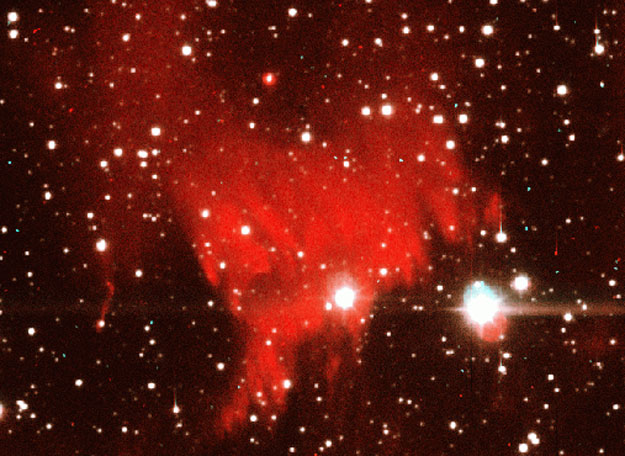
|
Explanation: Old photographs show no evidence of the above nebula. In 1992, a white dwarf star toward the constellation of Cygnus blew off its outer layers in a classical nova explosion: an event called Nova Cygni 1992. Light flooded the local interstellar neighborhood, illuminated this existing gas cloud, excited the existing hydrogen, and hence caused the red emission. The only gas actually expelled by the nova can be seen as a small red ball just above the photograph's center. Eventually, light from the nova shell will fade, and this nebula will again become invisible!
|
January February March April May June July August September October November December |
| ||||||||||||||||||||||||||||||||||||||||||||||||
NASA Web Site Statements, Warnings, and Disclaimers
NASA Official: Jay Norris. Specific rights apply.
A service of: LHEA at NASA / GSFC
& Michigan Tech. U.
Based on Astronomy Picture
Of the Day
Publications with keywords: emission nebula - nova
Publications with words: emission nebula - nova
See also:
- APOD: 2025 September 19 B The NGC 6914 Complex
- APOD: 2025 September 10 B The Great Lacerta Nebula
- APOD: 2025 July 21 B Cats Paw Nebula from Webb Space Telescope
- APOD: 2025 July 16 B The Rosette Nebula from DECam
- APOD: 2025 July 5 B Ou4: The Giant Squid Nebula
- APOD: 2025 July 3 B Nova V462 Lupi Now Visible
- APOD: 2025 June 26 B The Seagull Nebula
